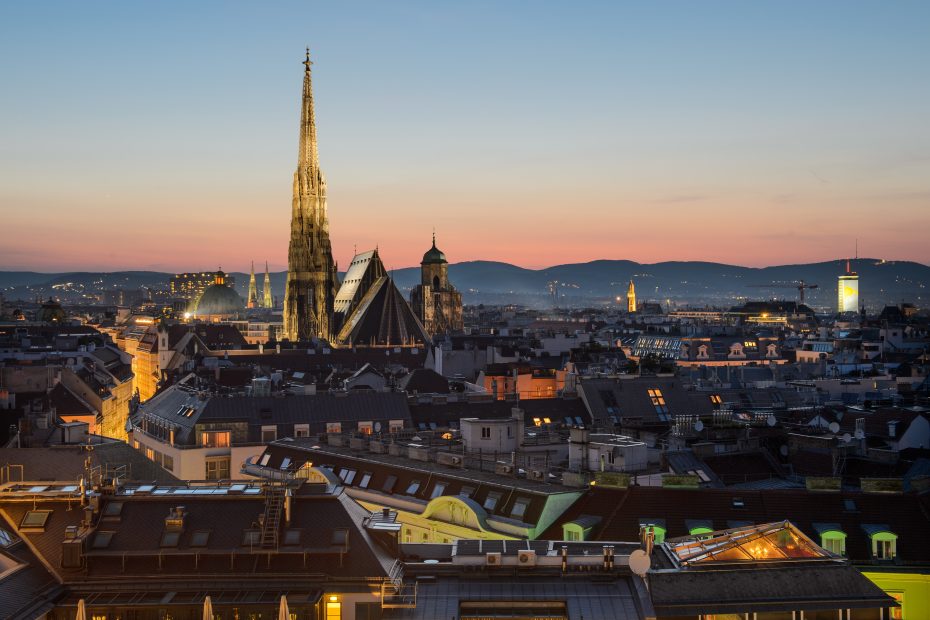Table of Contents
Introduction
As the capital of the mighty Habsburg Empire for centuries, Vienna is filled with imperial history and grandeur. This is best seen through its illustrious palaces that once housed emperors and empresses in luxury and style. A tour of Vienna’s historic palaces offers a glimpse into the opulent lifestyle of the imperial court and the rich architectural heritage left behind.
Schönbrunn Palace
The impressive Schönbrunn Palace is often considered Vienna’s answer to Versailles. This UNESCO World Heritage site was the lavish summer residence of the Habsburgs, especially Empress Maria Theresa. The magnificent Rococo-style palace has over 1,400 rooms, reflecting the scale and prestige of the imperial family.
Some of the key attractions at Schönbrunn include:
-
State Rooms – These lavishly-decorated rooms showcase frescoes, ornate stuccowork and chandeliers. The highlights are the Great Gallery and Hall of Ceremonies.
-
Gardens – Regal gardens surround the palace, including sculptured hedges, fountains and a Floriade.
-
Gloriette – This neoclassical marble structure atop a hill offers panoramic views.
Schönbrunn gives an introduction to imperial Vienna in all its extravagance and ambition.
Hofburg Palace
As the Habsburg’s official imperial residence, the sprawling Hofburg Palace complex is a must-see. The oldest sections date back to the 13th century, reflecting its long history. While parts are now closed or used by the government, visitors can explore:
-
Imperial Apartments – Elegantly decorated rooms that the imperial family once lived in.
-
Sisi Museum – Dedicated to the beloved Empress Elisabeth, with her gowns and jewels.
-
Imperial Silver Collection – Precious items like cutlery and ornate centerpieces.
The Hofburg demonstrates both the public and private lives of Vienna’s imperial rulers over centuries.
Belvedere Palace
Built as a summer palace for Prince Eugene of Savoy, the Belvedere is now a celebrated art museum. This Baroque complex consists of two stunning palaces separated by ornamental gardens.
The Upper Belvedere houses the museum’s highlights – the world’s largest collection of paintings by Gustav Klimt. Most famous is Klimt’s masterpiece The Kiss, a pinnacle of Austrian Art Nouveau style.
Seeing this iconic painting in its original palace setting is an unforgettable experience.
Liechtenstein City Palace
Once the residence of the influential princely House of Liechtenstein, their City Palace is filled with Rococo opulence. Marvel at the ornate stucco ceilings and frescoes by Maulbertsch.
The palace now displays part of the prince’s extraordinary art collection, including works by Rembrandt, Van Dyck and Cranach. Visiting this palace museum provides insight into the lifestyle of Vienna’s elite noble families.
Summer Palaces
In addition to their main city palaces, Vienna’s imperial family had lavish summer residences. Two of the most impressive are Laxenburg Palace and Schloss Hof.
Laxenburg is a sprawling palace complex with multiple buildings, gardens and scenic ponds. Meanwhile, the elegant lemon-yellow Schloss Hof was designed by the prominent Baroque architect Johann Lukas von Hildebrandt.
Visiting the Palaces
Most of Vienna’s palaces are open to visitors, with combo tickets available. Plan ahead as opening hours vary. Allow plenty of time to appreciate their scale and artistic details. The palaces are spread out, so it’s best to focus on 1-2 sites per day. Take trams between the city center and outer palaces like Schönbrunn.
Conclusion
A tour of Vienna’s imperial palaces offers a glimpse of the city’s opulent history as the capital of the Habsburg Empire. Marvel at the architectural elegance of Schönbrunn, see where emperors ruled at Hofburg, admire Klimt’s The Kiss at Belvedere, and more. The palaces stand as enduring monuments to the lavish lifestyle and artistic patronage of Vienna’s imperial dynasty.
FAQs
What are the main imperial palaces to see in Vienna?
The top palaces are Schönbrunn, Hofburg, Belvedere, and Liechtenstein City Palace. Schönbrunn and Hofburg were the main imperial residences.
When were most of the palaces built?
Vienna’s palaces span several centuries but most of the current buildings were constructed between the 17th-19th centuries during the Baroque and Rococo eras.
What’s included in a ticket to Schönbrunn Palace?
A Grand Tour ticket includes the State Rooms, Gardens and Zoo. An Imperial Tour adds the private apartments. There are also combination tickets with Hofburg.
Where is the Sisi Museum located?
The Sisi Museum dedicated to Empress Elisabeth is located in the Imperial Apartments at Hofburg Palace.
How can I see multiple palaces conveniently?
The Vienna PASS provides easy access to many palaces with skip-the-line entry. There are also combination tickets available just for the palaces.
